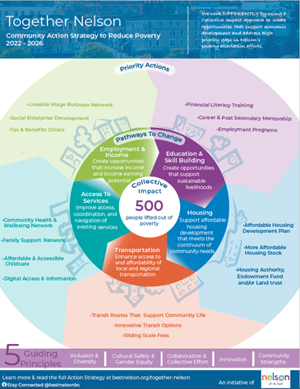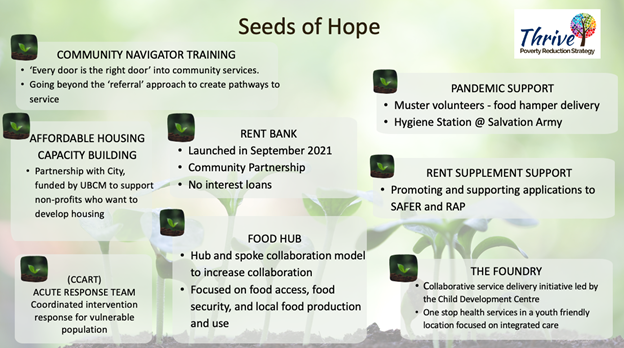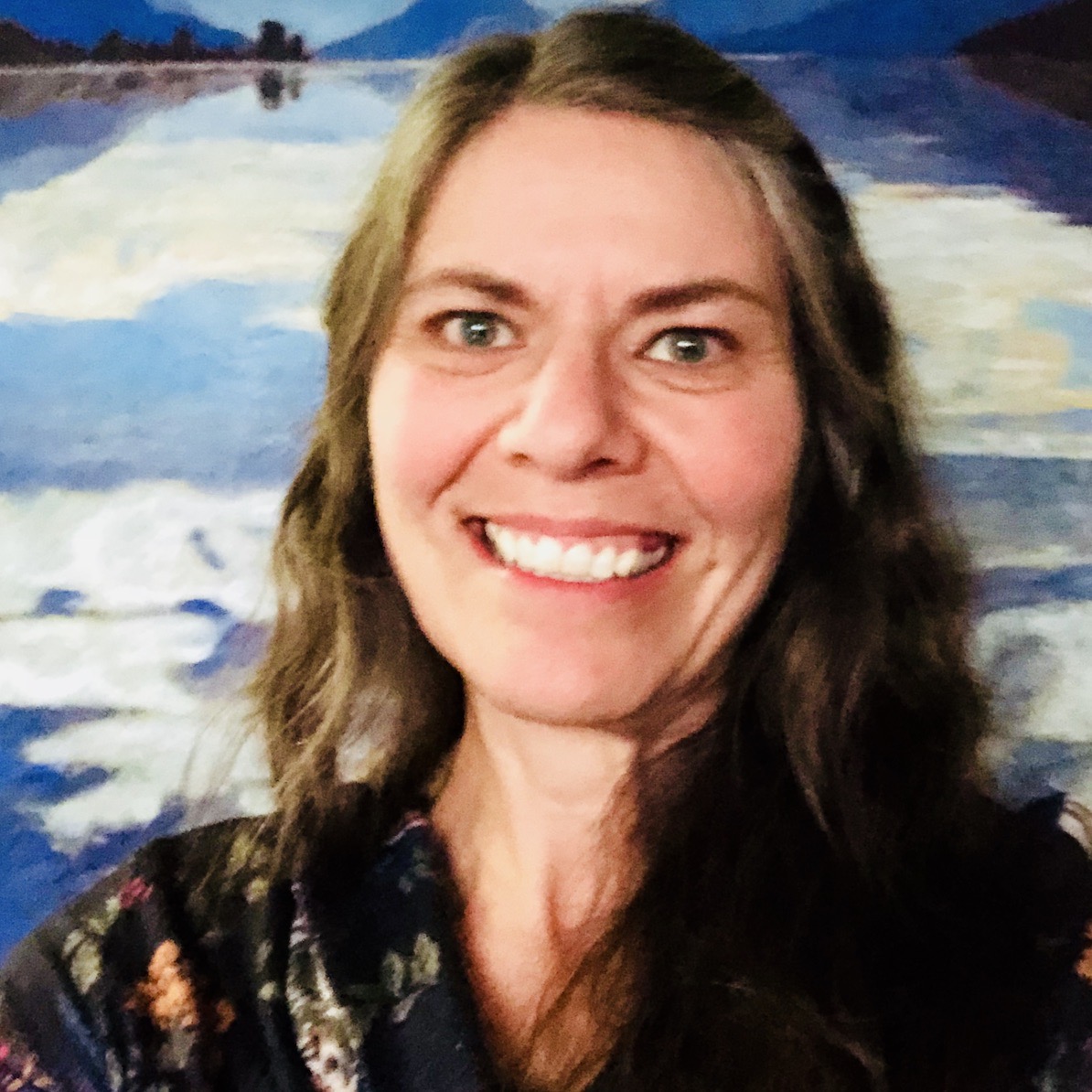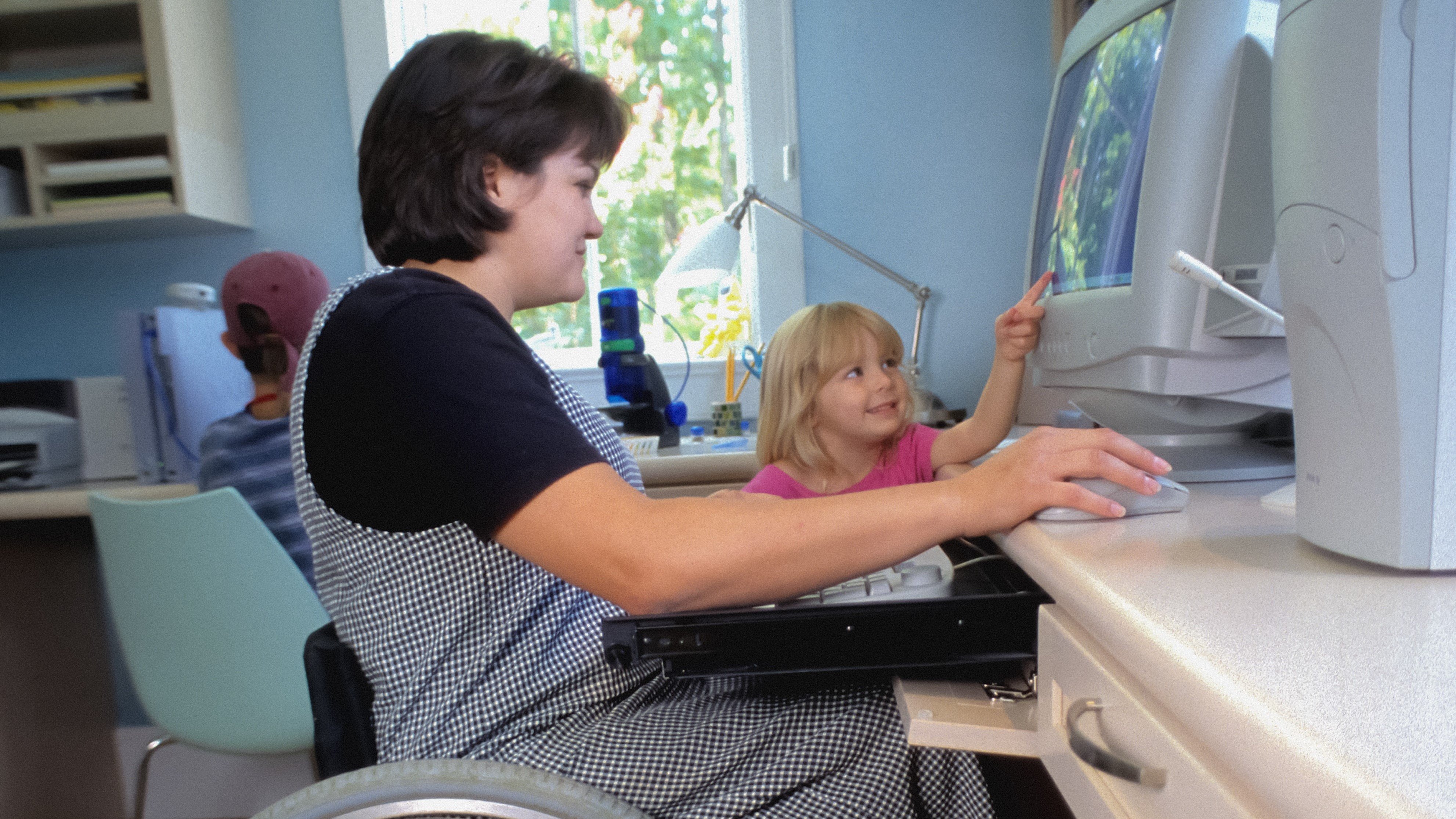The November 2021 BC Poverty Reduction Community of Practice highlighted poverty-reduction strategies created across the province in 2021.
Developed mid-pandemic, each process overcame tremendous challenges – particularly in relation to engagement and time constraints – while at the same time digging for relevant data and exploring circumstances, assets and challenges unique to each area. All but one were funded by the Union of BC Municipalities (UBCM) Poverty Reduction Program.
Alberni Clayoquot Regional Health Network
The Alberni Clayoquot Regional Health Network (ACHN) led the development of a complex regional strategy ranging from Port Alberni to Tofino, slated for release in January 2022.
The strategy builds on a comprehensive, collaborative foundation developed by the ACHN over a number of years and provides opportunities to introduce an equity lens to local government and other processes. Time spent during the community engagement process was invaluable, with over 100 interviews undertaken with people with lived and living experience.
Cranbrook Social Planning Society
In the Cranbrook area, the Cranbrook Social Planning Society provides project oversight and initiative in partnership with local government.
The plan – completed in September 2021 – takes a ‘helicopter’ view of poverty impacts in the region, providing new insights and baseline indicators to help shed light on the issues. It also offers a road map for moving out of silos to create a foundation for a more collaborative approach.
Although pandemic impacts cannot yet be substantiated by data, initial engagement with service providers and community members indicates that challenges to well-being are significant and likely prolonged.
Social Planning Cowichan
Social Planning Cowichan provides a regional social planning function and completed poverty reduction strategies for both Lake Cowichan and Ladysmith. The two strategies are unique, driven by engaged working groups led by representatives from across sectors who know the community and the issues. The strategies are also fueled by strong participation from people with lived and living experience, as well as a commitment to creating practical strategies that would not sit on the shelf.
The process held two surprise results: researchers found that the depth and breadth of poverty is hidden and misunderstood by many community members; and the survey question “What contributes to a healthy and happy life?” elicited the most insightful responses.
Since the release of the two strategies in fall 2021, each has been adopted by local government, with the mayors in each community being strong local champions.
District of Nanaimo
The Regional District of Nanaimo integrated poverty reduction into an overarching Social Needs Assessment and Strategy that will enable better coordination and help direct future capacity to address complex social needs in the region.
The project helped build connections and guide a deeper understanding of the roles and relationships of local government with community partners and non-profits specific to the social determinants of health.
A key recommendation is to create a social planning function within local government to guide regional coordination and add much-needed capacity to address better integration and communication across departments and organizations.
 Nelson at its Best
Nelson at its Best
In partnership with local government, Nelson at its Best completed Together Nelson: A community Action Strategy to Reduce Poverty in Nelson & Area (2022-2026) in November 2021.
The strategy outlines five bold, achievable pathways to change via 16 top priority actions. The overarching goal is to lift 500 people out of poverty in five years.
While circumstances ensured that, as Rona Park said, “what we imagined in the beginning wasn’t what happened in the end”, the outcome was successful and sets the stage for collaborative action moving forward. A ‘plan on a page’ provides an excellent communication tool and synopsis of key project outcomes.
Village of New Denver
As a small community of under 500 people with few resources, the Village of New Denver leveraged funding through partnership with the Selkirk College Department of Applied Research and Innovation, including a student research intern. The outcome was a 2021 State of Poverty and Recommended Next Steps report complete with recommended next steps.
The project provided a strong foundation to understand the breadth and scope of poverty in the area as well as initiating important conversations on the best approach unique to the community. The challenge now lies in finding the resources and capacity to support collaborative action.
qathet Regional District (Powell River)
In the qathet Regional District (Powell River), initial leadership to address poverty came from the community partners – First Credit Union and Lift Community Services. UBCM funding came at the perfect time for local government to add capacity and work together with others on the issue.
As in many other communities, the project built on other planning processes recently undertaken, like Child Care and Housing Needs Assessments. Momentum and collaborative capacity were co-generated through the process. Importantly, they found that social connectivity made the experience of poverty easier to bear on the smaller, more remote islands off the coast despite few resources and limited external connections. Much work was done to address stigma. Lone parents, seniors, and the working poor were identified as priority populations. Presentations to all local governments in the region set the stage for implementation of the plan.
City of Richmond
Adopted by City Council on December 6, 2021, the 2021–2031 Collaborative Action Plan to Reduce and Prevent Poverty in Richmond will guide the City of Richmond’s work, in collaboration with the community, to reduce and prevent poverty in Richmond over the next 10 years.
The purpose of the plan is to develop a deeper and shared understanding of the experiences and circumstances of individuals and families at risk of or living in poverty in Richmond in an effort to better meet their needs. The process of developing the plan uncovered valuable insight into community needs that resulted in the development of four strategic directions and 26 corresponding actions. The aim is to increase community capacity through effective partnerships and collectively create meaningful change in the lives of Richmond residents.
Sunshine Coast Resource Centre
The Sunshine Coast Regional Poverty Reduction Strategy was led by the Resource Centre in partnership with local governments. The project came on the heels of comprehensive housing and child care needs assessments, enabling the team to build on prior work and illuminate the extent of the poverty crisis. Front-line service providers provided insight into gaps and needs in this complex region, paving the way for an improved ability and desire to collaborate.
The resource includes a poverty lens tool that offers a platform for policymakers to consider impacts on people living in poverty. The top-priority recommendation is to create a collaborative Social Planning Council to diminish silos and build capacity to address complex social issues related to poverty reduction.
Social Planning Council of Williams Lake and Area
The Thrive Poverty Reduction Strategy was released in early 2021 and was brought to completion thanks to the support of multiple funding sources and in-kind contributions. These contributions allowed the project’s leader, the Social Planning Council of Williams Lake and Area to spend more time on the project. New partners came on board, collaborations emerged, community organizations stepped into leadership roles as the concept that ‘every door is the right door’ evolved from theory to practice. Implementation is underway in multiple areas, leveraging community strengths or Seeds of Hope.
Across the province, common strengths, challenges and themes have emerged to enable deeper understanding of the issue in these complex times. Stay tuned, as seven additional CEP members have embarked on poverty reduction strategies to be completed before the end of 2022!
Resources
- UBCM Poverty Reduction Planning & Action Program
- Alberni Clayoquot Health Network – Poverty Reduction
- City of Cranbrook and RDEK Poverty Reduction Plan
- Ladysmith/Stz’uminus Poverty Reduction Strategy
- Movin’ On Up Cowichan Lake Poverty Reduction Strategy Report
- Regional District of Nanaimo Social Needs Assessment and Strategy
- Together Nelson – A Community Action Strategy to Reduce Poverty in Nelson & Area 2022-2026
- New Denver Poverty Reduction – 2021 State of Poverty and Recommended Next Steps
- City of Richmond: 2021-2031 Collaborative Action Plan to Reduce and Prevent Poverty in Richmond
- Qathet (Powell River) Region Poverty Reduction Strategy
- Sunshine Coast – A Strategic Framework for Action on Poverty Reduction
- Williams Lake Thrive Poverty Reduction Strategy





